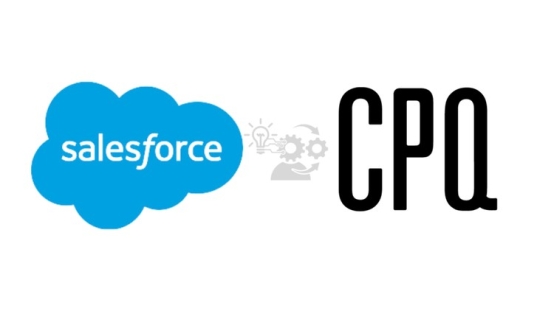A Complete Guide to CPQ Salesforce Software Integrations
Salesforce’s CPQ (Configure, Price, Quote) platform is a robust solution designed to connect seamlessly with other systems, helping organizations streamline and optimize their sales operations. This guide explores how CPQ Salesforce integrations work, their core advantages, and their practical uses.
Salesforce’s CPQ (Configure, Price, Quote) platform is a robust solution designed to connect seamlessly with other systems, helping organizations streamline and optimize their sales operations. This guide explores how CPQ Salesforce integrations work, their core advantages, and their practical uses.

What CPQ Salesforce Integrations Are and How They Work
CPQ Salesforce integrations connect Salesforce’s quoting and pricing tools with other critical business applications to improve workflow accuracy and speed. These integrations allow sales teams to work with synchronized, up-to-date data from multiple platforms, enabling better decisions and smoother operations. By automating complex steps like pricing calculations and quote generation, businesses minimize manual errors and enhance customer experiences. For growing companies, integrating CPQ with Salesforce can remove bottlenecks and create a foundation for scalable, strategic sales growth.
Key Advantages of CPQ Salesforce Integrations
Greater Efficiency – Automating repetitive quoting and pricing processes frees sales reps to focus on customer engagement and deal closure rather than administrative tasks.
Higher Accuracy – Real-time synchronization of product, price, and inventory information reduces mistakes and ensures consistent, error-free documentation.
Live Data Access – Teams can respond to customer requests with the latest information on pricing, product availability, and terms, enabling faster decision-making.
Scalable Growth – The integrations expand effortlessly as your company grows, supporting increased transaction volumes and more complex pricing structures without major system changes.
Popular Platforms Integrated with CPQ Salesforce
Many systems connect easily with Salesforce CPQ, supporting diverse industry requirements:
ERP Systems (e.g., SAP ERP, Oracle ERP Cloud) – Gives sales visibility into stock levels, orders, and financial details, ensuring quotes match supply and financial plans.
CRM Solutions (e.g., Microsoft Dynamics 365 CRM) – Creates a complete view of the customer journey, helping sales tailor offers and improve conversion rates.
E-commerce Platforms (e.g., Shopify, Magento) – Automates order processing from online purchases, ensuring smooth customer experiences from cart to completion.
These integrations demonstrate Salesforce CPQ’s versatility in working across multiple systems to enhance operational efficiency.
Getting Started: A Step-by-Step CPQ Salesforce Integration Process
Step 1: Evaluate Business Needs
Pinpoint areas where automation can have the greatest impact. Understand how CPQ integration can resolve specific operational challenges before starting.
Step 2: Select the Right Tools
Choose integration tools that align with your current systems, scalability requirements, and technical capabilities to ensure compatibility and long-term flexibility.
Step 3: Configure the Integration
Map out data fields, align workflows, and establish automation settings carefully to ensure smooth and accurate synchronization between systems.
Step 4: Test Before Going Live
Run thorough tests under real-world conditions to identify any issues or data mismatches, correcting them before full deployment.
Step 5: Monitor and Improve
After launch, track system performance with analytics tools. Make necessary adjustments to optimize processes and keep the integration running efficiently.
Real-World Use Cases
Manufacturing – A manufacturer integrated ERP with CPQ to automate inventory checks and price calculations, cutting order fulfillment time by 30% and improving accuracy.
Retail – A retail chain linked CPQ with its e-commerce and CRM systems to personalize recommendations, automate confirmations, and increase customer satisfaction by 25%.
Technology – A tech firm combined CRM and marketing automation tools with CPQ to streamline lead nurturing and conversion, improving close rates by 20%.
Frequently Asked Questions
Q1: What challenges are common during implementation?
Issues such as complex data mapping or compatibility differences are common. Proper planning, phased rollouts, and experienced technical support help minimize risks.
Q2: How long does a multi-system integration typically take?
Timelines vary, but most projects range from a few weeks to several months depending on scope, customization, and stakeholder involvement.
Q3: Which industries benefit most from CPQ integrations?
While all industries can benefit, sectors such as manufacturing, retail, tech, healthcare, and finance have seen the biggest improvements in efficiency, accuracy, and customer satisfaction.

